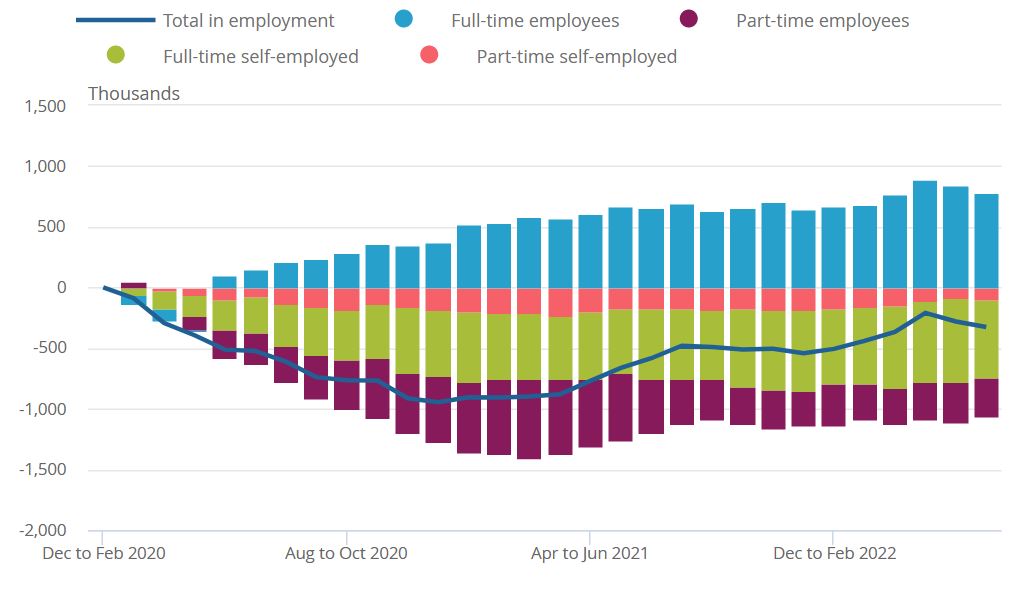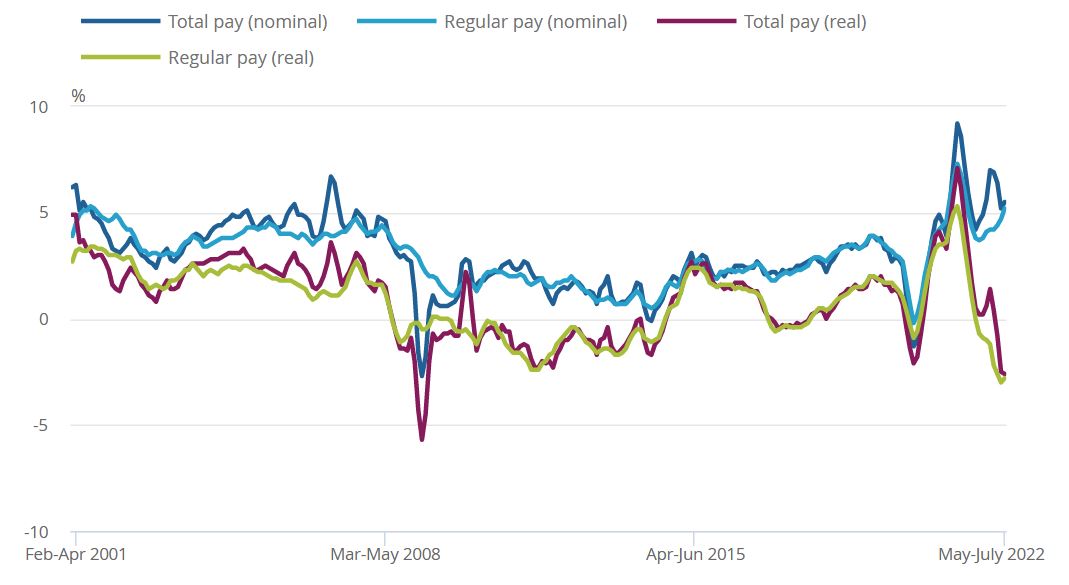ONS Labour Market September 2022
Vacancies fall for second time in two years
- The number of job vacancies in June to August 2022 was 1,266,000 – a decrease of 34,000 from the previous quarter, following the first fall in the previous month since June to August 2020.
- Information and communication saw the largest falls in vacancy numbers, which was down 11,000 vacancies, followed by professional, scientific and technical activities, down 8,000 vacancies on the quarter. Human health and social work had the largest increase in vacancies, up by 7,000 on the quarter.
- The total number of vacancies was 470,000 (59.1%) above the January to March 2020 pre-pandemic level.
Rise in payrolled employees
- Early payroll estimates for August show the number of payrolled employees rose by 803,000 employees (2.8% YoY) to 29.7 million.
- On the previous month, the number of payrolled employees rose by 0.2% (71,000).
- This is up 718,000 on the pre-Covid level, with the number of payrolled employees up by 2.5% since February 2020.
- The largest yearly increase in payrolled employees was in the education sector (a rise of 133,000 employees), while the smallest remained in the construction sector (a fall of 7,000).
Unemployment dips to lowest rate in 48 years
- The unemployment rate for May to July increased by 0.2pp on the quarter to 3.6%. This marks the lowest rate since May to July 1974.
- In the latest three-month period, the number of people unemployed for up to six months decreased to a record low, and those unemployed between 6 and 12 months increased. Meanwhile, the number of people unemployed for over 12 months continued to decrease.
- The economic inactivity rate increased by 0.4 percentage points on the quarter to 21.7% in May to July. This was driven by those aged 16 to 24 years and those aged 50 to 64 years, reasons including because they are students or long-term sick.
Decline in employment rate
- The employment rate for May to July decreased by 0.2pp on the quarter to 75.4%, but is still 1.1pp below pre-pandemic levels.
- Consistent with previous months, the number of full-time employees increased over the quarter, while part-time employees recorded a slight decrease during the latest period.
UK employees and self-employed workers, full-time and part-time workers, aged 16 years and over, seasonally adjusted, cumulative change from December 2019 to February 2020, for each period up to May to July 2022

Source: Office for National Statistics
Hours worked down on pre-Covid rate
- Total actual weekly hours worked decreased by 3.5 million hours compared with the previous quarter to 1.04 billion hours in May to July.
- Average actual weekly hours worked have returned to pre-Covid levels. The shortfall in total hours compared with pre-coronavirus pandemic levels is linked to reduced numbers in employment.
- This is 11.1 million below pre-pandemic levels (December 2019 to February 2020). But total actual weekly hours worked by women continue to exceed pre-coronavirus pandemic levels.
Inflation erodes earnings
Both annual total and regular pay growth lagged inflation in the three months to July.
- In nominal terms, average regular pay (excluding bonuses) for employees in Great Britain was £571 per week before tax and other deductions from pay – up from £542 per week a year earlier.
- Average total pay (including bonuses) for employees in Great Britain was £613 per week before tax and other deductions from pay – up from £580 per week a year earlier.
- Regular and total pay growth rose by 5.2% and 5.5% respectively in the three months to June compared to a year earlier.
- Average total pay growth for the private sector was 6.2% in the three months to July, and for the public sector it was just 2.0%. The wholesaling, retailing, hotels and restaurants sector continued to see the largest growth rate at 7.0%, followed by the finance and business services sector at 6.3%; partly reflecting strong bonus payments across the private sector.
- In real terms (adjusted for inflation), total pay declined by 2.6% in the three months to July. Regular pay declined by 2.8% over the period, following a record decline of 3.0% in the previous month.
Average weekly earnings annual growth rates in Great Britain, seasonally adjusted, January to March 2001 to May to July 2022

Source: ONS
Back to Retail Economic News